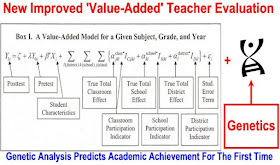Proof You Shouldn’t Blame Teachers For The Achievement Gap
New research finds that there are effective educators teaching students of all socioeconomic backgrounds.
Teachers shouldn’t be held responsible for the big gap in the achievement levels of rich and poor students, new data suggests.
By looking at the effectiveness ratings of teachers who work with students from varying socioeconomic classes, Mathematica Policy Research determined that rich and poor children generally have access to equally impressive educators. The research, which was sponsored by the U.S. Department of Education, stands in the face of arguments that a more equitable distribution of teachers could substantially move metrics of educational attainment.
Affluent students outperform their low-income peers on meaningful educational benchmarks. They have higher high school graduation rates and higher standardized test scores. Policymakers have said in the past that teachers might influence this gap. Indeed, previous data shows that low-income students tend to have less access to experienced teachers.
“We know from past research that there is a very large gap in achievement between high- and low-income kids, and we also know some teachers are quite a bit more effective than others,” said Eric Isenberg, senior researcher for Mathematica. “So we were interested in exploring whether there’s a link between those two things ― if achievement gaps could be explained by low-income kids having less effective teacher than high income kids.”
It surprised me its just how little difference there is on average between teachers in those two groups of kids.Eric Isenberg, senior researcher for Mathematica
The study looked at effectiveness ratings for English language arts and math teachers in 26 districts over the course of five years. These teachers worked with students in the fourth through eighth grades.
Researchers used a value-added model to measure the effectiveness of a teacher. This statistical model is controversial in the education world ― Isenberg called it an “imperfect measure,” but he said it’s the best available option. This statistical technique is used to isolate how students’ test scores change from year to year, and how much a teacher is contributing to these changes.
Although researchers did not work with a nationally representative sample of school districts, “the study districts were chosen to be geographically diverse, with at least three districts from each of the four U.S. Census regions,” the report says. About 63 percent of the students in the studied districts qualify for free or reduced-price Proof You Shouldn't Blame Teachers For The Achievement Gap | Huffington Post:



